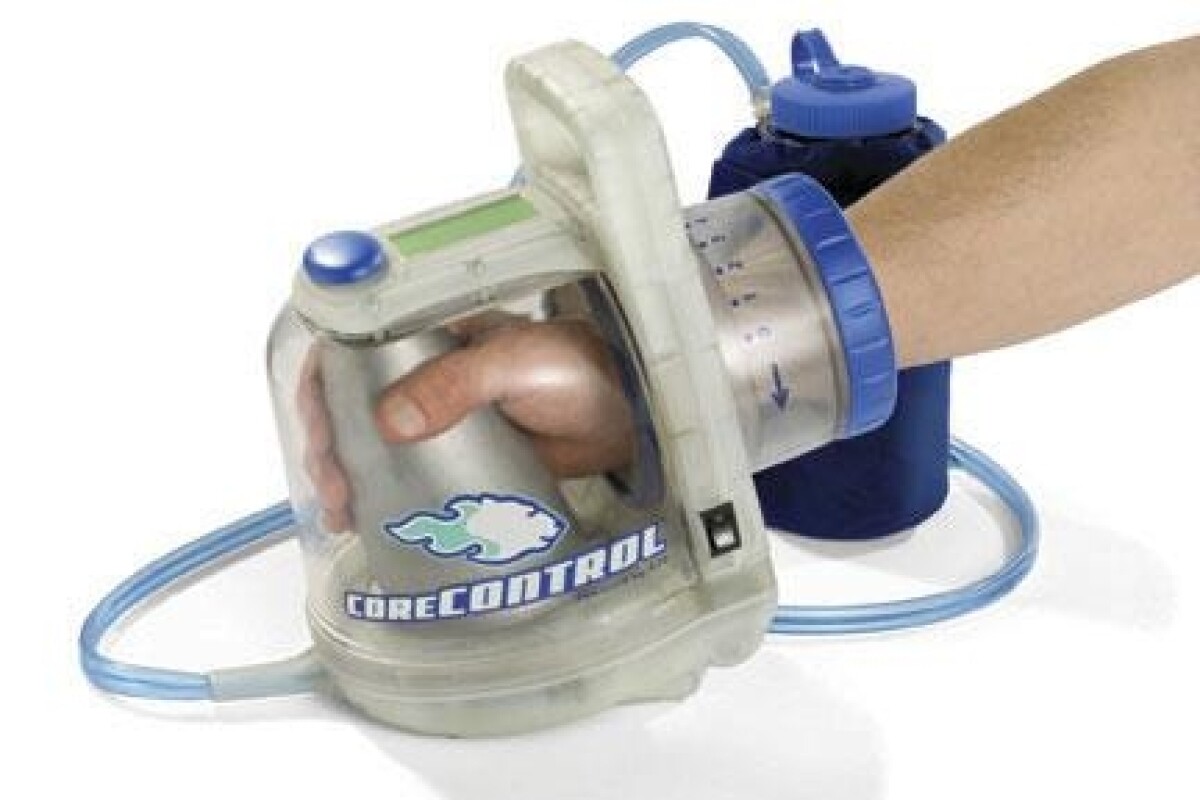May 9, 2007 While traditional body cooling systems such as ice vests, wet towels and misting fans may feel like they're working to the benefit of the user, they're actually quite ineffective at reducing the body's core temperature, as they work against the body's natural insulation and heat retention systems. Through extensive research into mammalian heat regulation systems, AVAcore has developed a simple, portable device that effects heat exchange to the body core extremely quickly. You don't necessarily feel cooler, you just feel completely refreshed and less fatigued - and the system is producing some remarkable and unexpected results for athletes.
As warm-blooded creatures that are exposed to a range of temperature extremes, mammals have developed some fairly sophisticated means of regulating temperature at the body core. Take the Black Bear for example; it hibernates through a long and freezing cold winter, maintaining a warm core temperature despite icy surroundings and a complete lack of food intake for heating energy. When it emerges in spring and its metabolic rate increases through exercise and nutrition, the core temperature challenge is reversed; the bear must now shed excess internal heat to maintain a stable core temperature. It does so through a few small but effective "radiator" surfaces that are uninsulated - in the pads of the feet, the tip of the snout, and the tongue.
In humans, the key radiator zones occur in our palms, the soles of our feet, and hairless facial skin. Looking at a thermographic image of a runner who is reaching high body temperatures, you can clearly see the heat radiating from these areas whereas the torso is quite externally cool.
AVAcore's Core Control Rapid Temperature eXchange (RTX) devices apply this information to draw heat directly out of the body core without trying to push cooling in through the skin and insulating fat. By increasing bloodflow to the palm of the hand using a slight vacuum, and cooling it directly, the body is able to shed core temperature 2 to 5 times faster than through skin surface treatments.
The system has been in testing now for 2 years with a range of elite sporting teams, firefighters, the military and sufferers of Multiple Sclerosis, who often suffer badly from an inability to regulate core temperature. Testing has been an unmitigated success - no adverse side effects have been found, the system has been shown time and again to cool the body core quickly and effectively - and some unexpected performance gains have become apparent:
- Using the RTX system while exercising under a thermal load increased athletes' endurance by 25%, increased the initial recovery rate by 50%, and increased fat oxidation by 15% - meaning the athletes burned a greater percentage of fat instead of carbohydrates during exercise.
- Cycle ergometer tests showed a 6% reduction in the time taken to cycle 30km while using the RTX system, and a greater sustained workload (up to 19% greater) for a given heart rate and tympanic temperature.
- Quicker recovery times under weightlifting/strength training stresses enabled athletes using regular RTX cooling to dramatically increase both their daily output and their improvement rates. In one example, a study group using RTX cooling were immediate able to average double the daily pull-up repetitions of the control group - but after 40 days of training the RTX group had improved to an average of 44 pull-ups per set where the control group were languishing at 14.
Athlete testimonials are interesting as well - few speak of feeling themselves cool down, but most speak of how much more refreshed and energised they feel after an RTX treatment: "In temperatures exceeding 100 degrees I am able to cool and feel as if I am starting the day over again with my original energy level," says racing cyclist Mark Patton, "there are days where I participate in more than one race. Cooling between races makes me feel as if each race is my first. It makes me feel 100% better."
Warming up
AVAcore is working on developing a similar portable unit to quicky restore the core temperatures of hypothermia sufferers, divers and others who need rapid heat transfer into the body core. A unit could potentially be developed to either heat or cool the body core depending on situational requirements, which would have widespread medical applications, particularly due to the fact it is so non-invasive - slip the unit onto a patient's hand and the rest of the body remains accessible for treatment while the core temperature is being stabilised.
The RTX technology, developed by thermoregulation experts at Stanford University, is exclusively licensed to AVAcore Technologies. Interested parties should contact AVAcore directly. It will be interesting to see how this effective cooling glove technology propagates through elite sports organisations and other industries.











